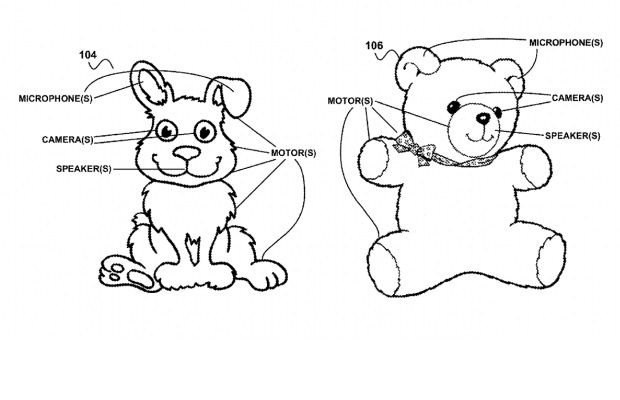Smart teddy bears and artificially intelligent toys may soon be in control of our homes, courtesy of Google, according to new files revealed this week.
The U.S. Patent and Trademark Office on Thursday published a Google patent application for dolls capable of detecting and looking at users when spoken to as well as perceiving voice commands.
The document suggests the toys could be used to control a wide range of devices, from televisions and DVD players to home thermostats, motorised window curtains and lights.
The patent adds that making the device look “cute” should encourage even the youngest members of a family to interact with it.
“Young children might find these forms to be attractive,” it says. “However, individuals of all ages may find interacting with these anthropomorphic devices to be more natural than interacting with traditional types of user interfaces.”
The dolls are designed to pick up on audio and visual cues via a camera and microphone, and will be able to communicate with IoT-enabled home appliances such as thermostats and lighting via bluetooth.
One of the more unsettling features is how “the anthropomorphic device may aim its gaze at the source of the social cue… upon reception or a detection of a social cue,” meaning the doll will react and look at sources of noise or movement.
The toy will spend its days in low-power sleep mode, then wake up when it senses then user need it by opening its robot eyes, yawning or stretching.
The patent application by two Google engineers calls for an anthropomorphic device that could be a “doll or toy that resembles a human, an animal, a mythical creature or an inanimate object.”
Drawings attached to the patent application, which was first filed in 2012, show a plush rabbit and teddy bear, each with microphones hidden in their ears and cameras in their eyes designed to meet a human’s gaze and respond to social gestures and voice commands.
The engineers later add that the device could also be “a dragon or an alien life form.”
“If the user speaks a command while gazing back at the anthropomorphic device, the anthropomorphic device may access a profile of the user to determine, based on the user’s preference encoded in the profile, how to interpret the command,” says the filing by engineers Daniel Aminzade and Richard DeVaul, who is the “director of rapid evaluation and mad science” at the secretive Google X research labs.
